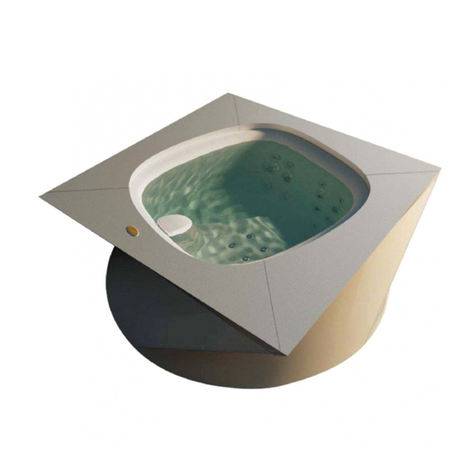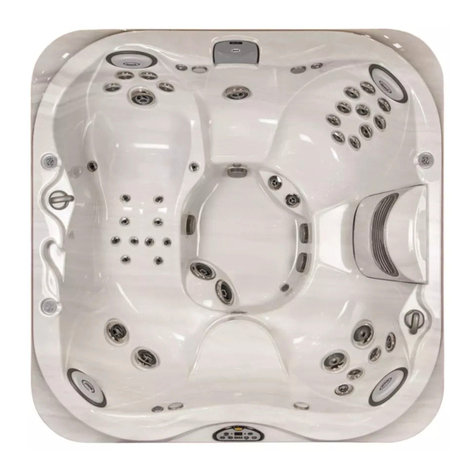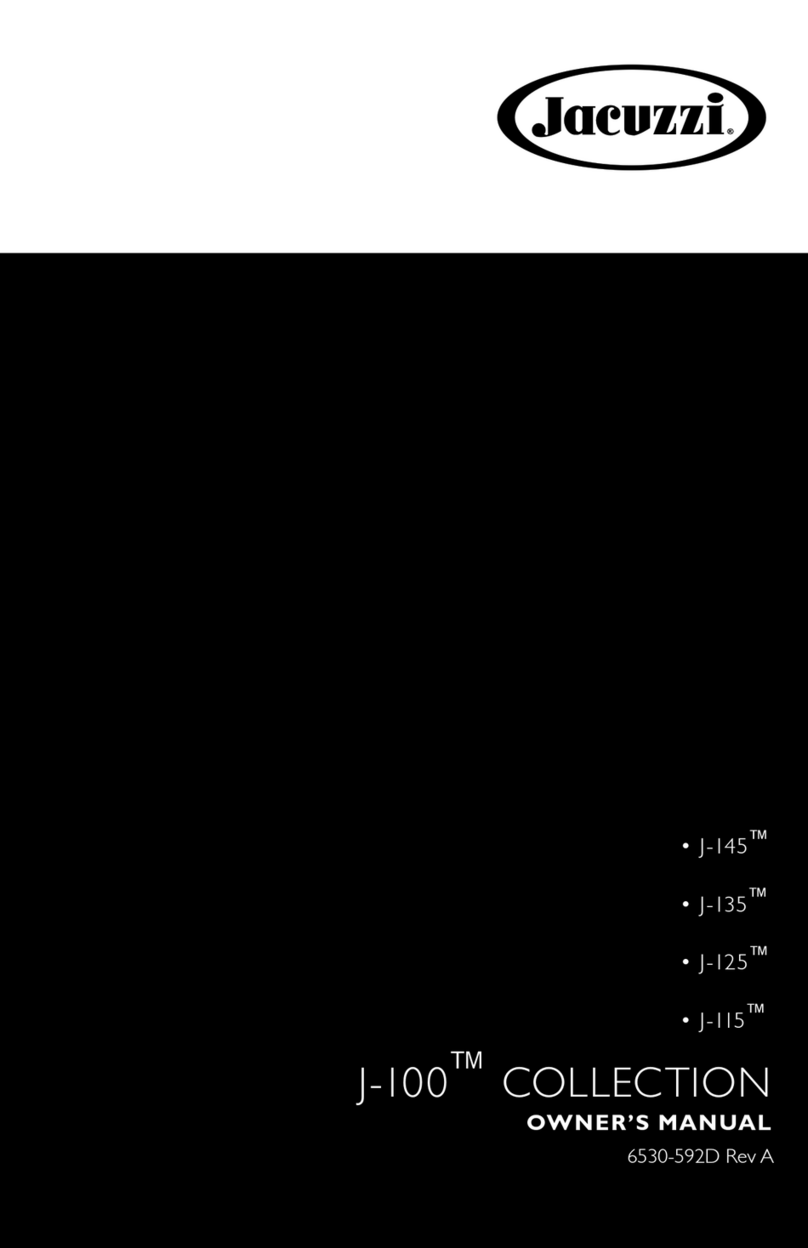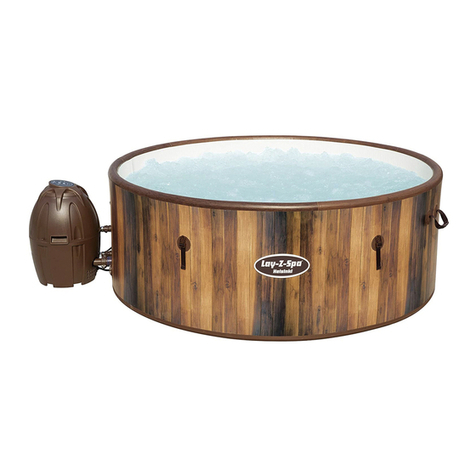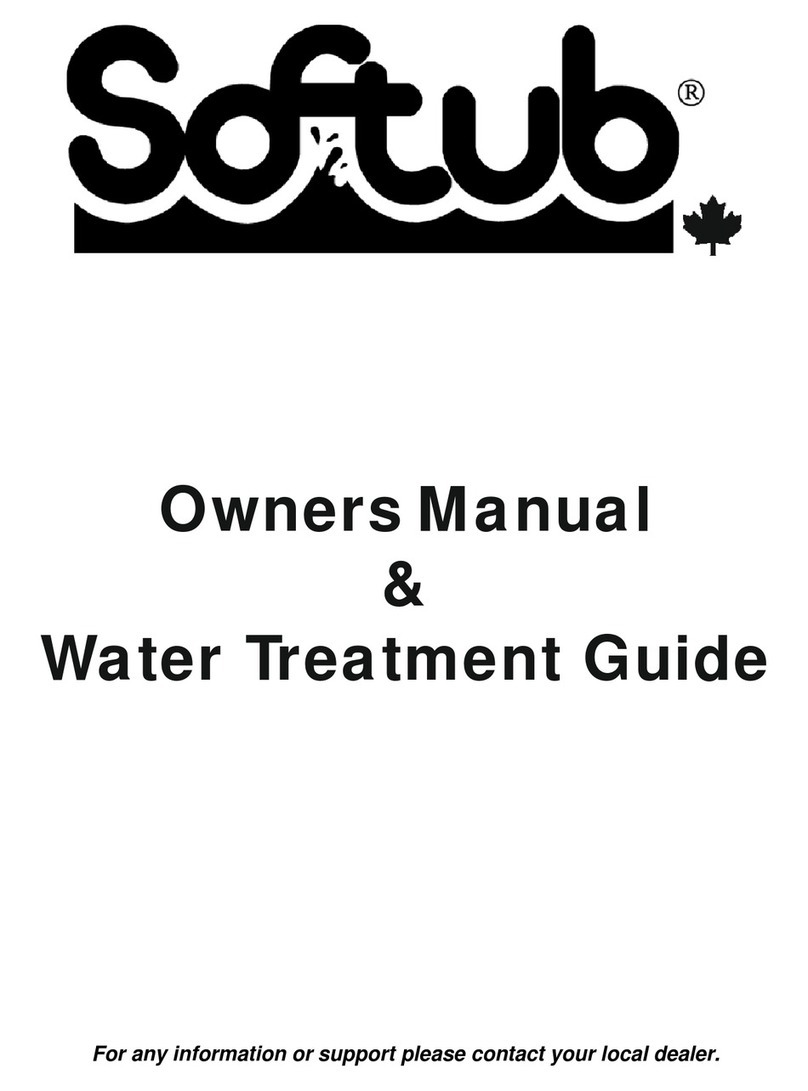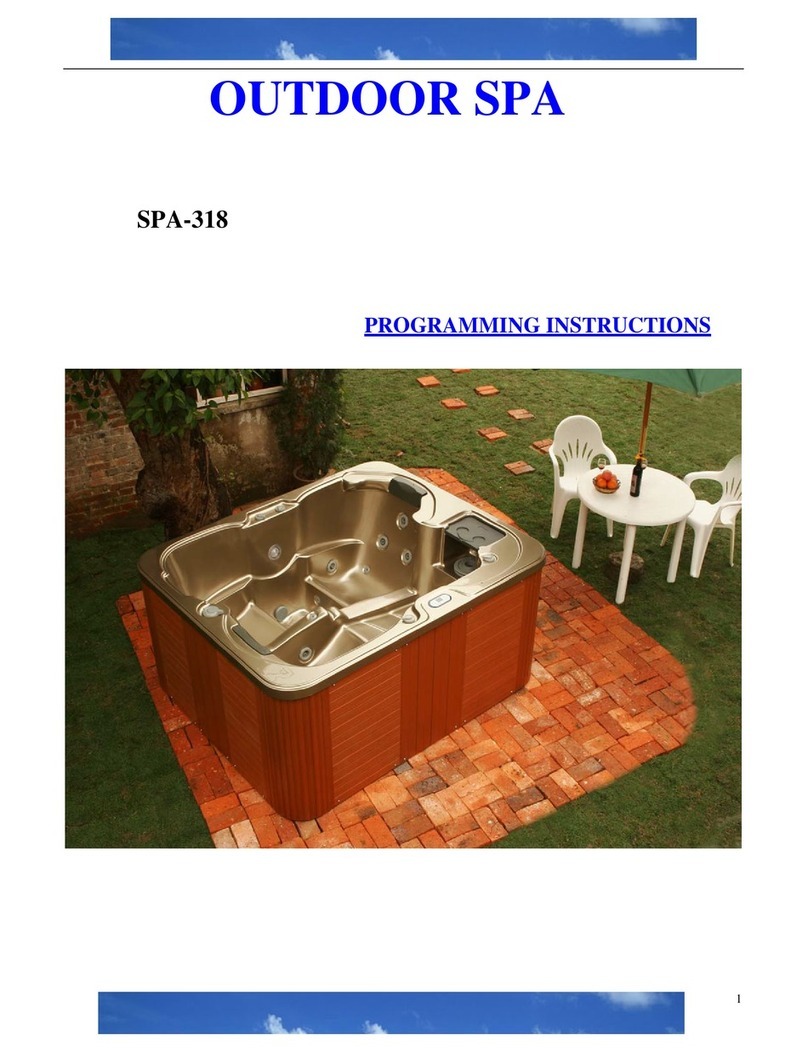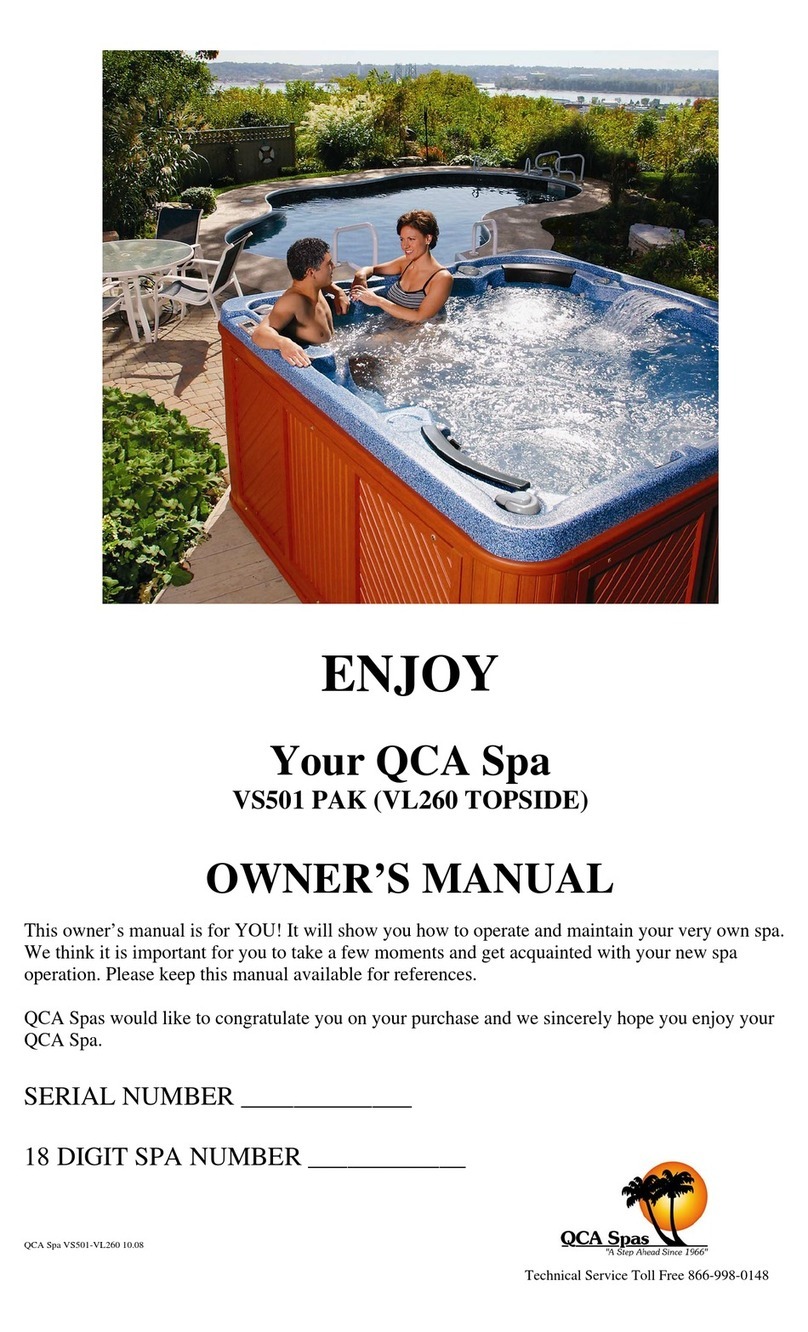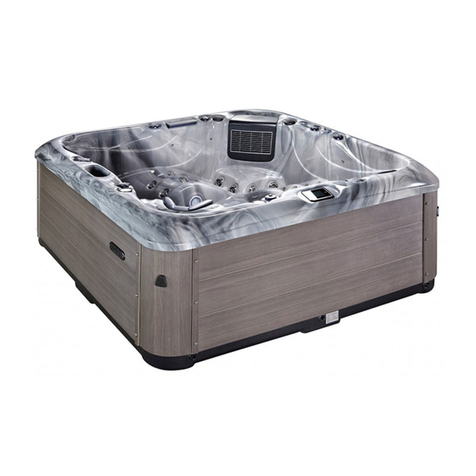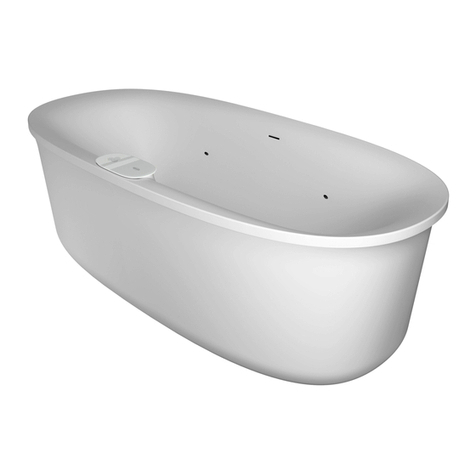Weltevree dutchtub User manual

dutchtub user manual - english


Contents
user manual
01 Introduction
History pag. 05
Dutchtub worldwide pag. 06
02 Safety & use pag. 07
03 General information
What do you need? pag. 08
What is suitable for the Dutchtub? pag. 08
04 Standard equipment
4.1 Parts pag. 09
4.2 Use
Filling pag. 10
Heating pag. 12
Using the cover pag. 13
Draining pag. 14
05 Options pag. 15
5.1 Ash tray
Parts & use pag. 16
5.2 Turbo
Parts pag. 17
Use pag. 17
5.3 Chimney
Parts pag. 21
Use pag. 22
5.4 Winter cover
Parts & use pag. 24
5.5 Handtrailer
Parts pag. 25
Use pag. 26
06 Maintenance
Cleaning pag. 27
07 Contact information pag. 29


pag 05 - dutchtub user manual
01 Introduction
Congratulations on purchasing the
Dutchtub!
This manual contains a description
of the Dutchtub, operating instruc-
tions for pleasant tubbing and main-
tenance instructions for a prolonged
service life.
Enjoy!
History
The Dutchtub was designed in 2002 by Floris
Schoonderbeek (1979). Floris focuses on practical
designs which are easily adaptable to their sur-
roundings. Functional, earthly objects which are
an obvious reaction to the countryside’s urbaniza-
tion and the reversed need for nostalgia in urban
areas. This explains the nickname of designer
Floris: ‘urban farmer’.
The Dutchtub was a project for his final exam
at the Art Academy in Arnhem and lead to
his breakthrough as a designer. The Dutchtub
illustrates his attitude perfectly. Both its design
and operation are simple. The high quality of
the handmade and numbered design lies in its
mobility and independence of external sources,
making this product back-to-basic, but also
providing a high level of comfort.
In 2003 the Nomination Committee of the Rotter-
dam Design Award described the Dutchtub as
follows: “It is a bizarre and funny object which not
only provides a surprising and convincing image,
but also functions properly.”

pag 06 - dutchtub user manual
Dutchtub worldwide
The Dutchtub is currently sold through distributors
in various countries. Everywhere in the world the
same spearhead applies: The Dutchtub is mov-
able. Because of its low weight of 75 kg, it can
easily be moved or brought with you on holiday.
The Dutchtub can be tested at various experience
sites such as holiday houses, beach clubs and
restaurants. You can also hire the Dutchtub for
events and parties in your own backyard.

pag 07 - dutchtub user manual
Safety & Use
Pay attention to the following 5 safety aspects
when using the Dutchtub:
1. Fire
- The Dutchtub is a wood-fired tub. Always
consider the dangers of open fires.
2. Water
- Make sure that the heating coil is always fully
filled with water when lighting a fire in the
heating system. Always check if the fire is
extinguished before draining the Dutchtub.
If not, the heating coil will be damaged.
- Drain the Dutchtub after each use because of
the dangers of bacteria growth and frost risks
during the winter.
3. Temperature
- The Dutchtub water temperature should not
exceed 38 degrees Celsius (100 degrees
Fahrenheit). The tub has no thermal cut-out.
Refer to page 12 for more information on
temperature control.
4. Installing and moving
- Never move a Dutchtub filled with water.
- Always place the tub on a solid surface with a
min. load-bearing capacity of 1275 kg (Dutch-
tub 75 kg, water 800 kg, 5 persons 400 kg).
Consider the fact that the surface could melt.
Warm water splashing over the edge of the tub,
for instance, can cause snow to melt, resulting
in the tub tipping over.
- When installing the Dutchtub, always observe
the direction of the wind. Do not place the heat-
ing coil in the direction of the wind.
- Do not use the Dutchtub indoors.
- Do not use the Dutchtub underneath a shelter.
5. Surroundings
- Before using the tub, think about what you
want to do with the water drained from the tub
(directly from the Dutchtub of by using a garden
hose).
- The Dutchtub is ecologically sound if wood with
the proper certificates is used.
Explanation used symbols in this user manual
Attention!
Hot!

pag 08 - dutchtub user manual
03 General information
The Dutchtub is a handmade polyes-
ter product. As with polyester boats,
the Dutchtub is resistant to extreme
weather conditions ranging from frost
to extreme heat. Polyester is an ex-
tremely durable material which can
be easily cleaned and repaired.
The heating system is made of stain-
less steel (316) which is the best of its
kind.
What do you need?
A regular garden hose with fittings for connec-
ting the hose to a water tap and the Dutchtub
tap plug. Most standard fittings are suitable.
Finely chopped wood.
A thermometer for monitoring the water
temperature.
What is suitable for the Dutchtub?
In addition to water, sea salt and other biode-
gradable products are suitable for the Dutchtub.
We strongly advise against using chemicals.

pag 09 - dutchtub user manual
08 Rubber plug: The rubber plug is used as a
stopper for the water inside the cooler or as
a stopper for the turbo.
09 Tap plug: Connecting piece between Dutch-
tub and hose
10 Cap: sealing cap
04 Standard equipment
4.1 Parts
01 Tub
02 Heating coil
03 Heating basket: to keep the wood inside the
heating system
04 Wok: The wok is used to keep the heat
inside the heating coil during the heating
process
05 The cover is used to protect the tub from
dirt and contamination. It also makes the
water heat faster during the heating process
and cool down slowly when the fire is extin-
guished.
06 Cooler for drinks
07 Tray
01
06
07
05
02
04
03
08 09 10

pag 10 - dutchtub user manual
4.2 Use: Filling
Insert the tap plug at the bottom
of the Dutchtub.
The water will enter the Dutchtub at the bottom. Make sure that the Dutchtub logo is always sub-
merged in water.
Connect the hose with the fitting and open the tap to fill the tub.
01 02
03 04

pag 11 - dutchtub user manual
Disconnect the hose. *
Try to screw on the cap as fast as possible.
Loosen the tap plug. **
*
After filling the tub, you can leave the hose attached.
** Water will escape from the Dutchtub, so keep the sealing cap at hand.
05
07
06

pag 12 - dutchtub user manual
4.2 Use: Heating
Turn the heating basket into
the coil until it is supported at
three points.
Frequently stir the water to mix the warm upper layer and cold
lower layer until the water has reached the proper tempera-
ture (max. 38 °C – 100 degrees Fahrenheit).
If the water temperature in the tub exceeds
38 °C (100 degrees Fahrenheit), remove the
wok from the heating coil or add cold water
by using the hose (reconnect if necessary).
Fill the heating coil with finely
chopped wood and light a
fire.
Place the wok on top of the heating coil for
optimal circulation.
01 0302
04 05

pag 13 - dutchtub user manual
4.2 Use: Cover
Grab the cover by the handles. Tilt the cover onto the Dutchtub.
Observe the notch for the table.
01 02
05

pag 14 - dutchtub user manual
4.2 Use: Draining
Loosen the cap at the bottom of the Dutchtub or remove the hose and tap plug (page 10).
If you want to drain the water at another location, proceed as follows:
Reconnect the tap plug.
Reconnect the hose. Put the far end of the hose at the desired location.
01
02
03

pag 15 - dutchtub user manual
05 Options
Various options are available making the
Dutchtub even more comfortable.
5.1 Ashtray
5.2 Turbo
5.3 Chimney
5.4 Winter cover
5.5 Handtrailer
5.3
5.1
5.4
5.55.2

pag 16 - dutchtub user manual
Ashtray: Parts & use
Stainless steel ashtray for collecting ashes underneath
the heating coil.
Place the ashtray centrally underneath the heating
coil before heating the tub. The ash scoop will collect
the ashes.
5.101

pag 17 - dutchtub user manual
Turbo: Parts
Turbo: Use
The turbo can be used to accelerate the filling and heating process & the rubber plug
Tighten the cap. Push the rubber plug inside the Dutchtub in the
heating coil lower hole.
5.2
01 02

pag 18 - dutchtub user manual
Connect the hose to the turbo. Open the tab and start heating, as described under “Standard equipment -
Heating” page 14.
As the heating coil is filling up with water, the Dutch-
tub might tilt. Provide counterweight by briefly push-
ing on the table.
Open the tab partially.
03
04 05

pag 19 - dutchtub user manual
Warm water will flow from the top of the heating coil.
It is possible to change the temperature by heating
the water further or by slighting opening or closing
the turbo tap.
Close both taps. Remove the rubber plug from the heat-
ing coil lower hole to allow the water to
circulate.
Make sure that the Dutchtub logo on the black plate is
always submerged in the water.
06 07
08 09

pag 20 - dutchtub user manual
Remove the hose and heat the Dutchtub further, as described under “Standard equipment - Heating” page 14.
10
Table of contents
Popular Hot Tub manuals by other brands
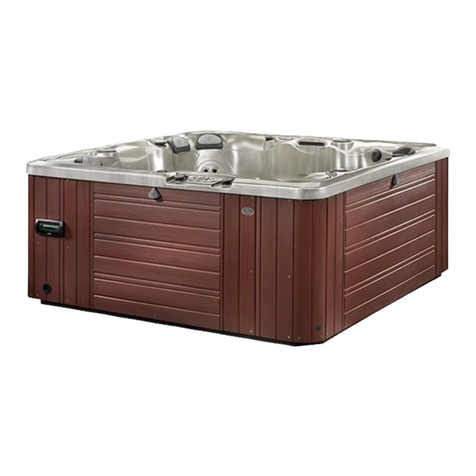
CalderaSpas
CalderaSpas CalderaSpas Utopia Series owner's manual

anko
anko SS-601A user manual

CalderaSpas
CalderaSpas CANTABRIA owner's manual

Dimension One Spas
Dimension One Spas HYDRO SPORT Installation and owner's guide
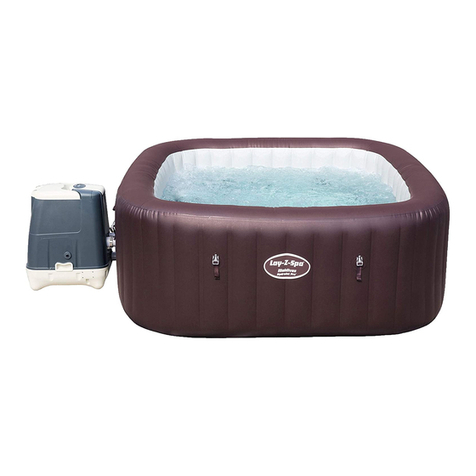
Bestway
Bestway Lay-Z-Spa Maldives HydroJet Pro manual
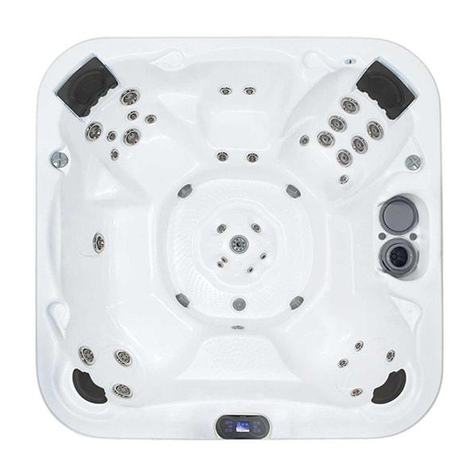
Dimension One Spas
Dimension One Spas Nautilus Specifications
